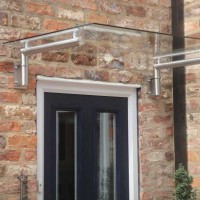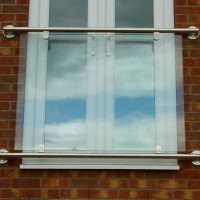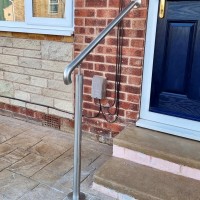Working With Stainless Steel
Working With Stainless Steel
“Stainless steel products are used in almost every building and have endless applications- perhaps more than most people realise as stainless steel can be found in our homes, gardens, public spaces, everyday gadgets and on board cars and aircraft. In this blog we take a look at the fabrication processes”
What is stainless steel?
‘Stainless’ is a term that was developed in the early stages of cutlery manufacture and subsequently adopted as a generic name for a range of types and grades of corrosion resistant material. Stainless steel is essentially an iron alloy with a minimum chromium content of 10.5%.
Why use stainless as a material?
Stainless steel is often a more expensive option when compared to wrought iron or ‘carbon steel’ but the initial cost is often offset with a long lasting lifespan. Stainless steel is strong, resistant to heat and corrosion and relatively simple to work with which all make it a popular choice for construction. The finish of stainless steel is attractive and modern which suits the vast majority of architectural applications, it’s also 100% recyclable.
Where is stainless steel used?
Everywhere! Stainless steel can be found in toys, phones, cars, homes, gardens, aircraft and more. For us here at DioMet, stainless steel features in most of our products including our canopies, Juliet balconies, glass balustrades, staircases, handrails and even our washing line poles.
What fabrication processes are used?
The raw material of stainless steel can be worked into a finished product through a variety of different manufacturing processes. The material is usually purchased in full sheets or lengths such as box sections, flats and tubes which are then processed down by laser cutting, shearing, machining or forming.
Once the raw materials have been processed, the stainless steel components are then usually fabricated and welded into a canopy bracket, fencing post or balcony for example and then polished to the required finish.
What polished finishes are available?
There are two main types of polished finish; dull polished (satin / brushed) and mirror polished (chrome / bright). The dull polished stainless steel works a visible grain into the material and forms the ‘brushed finish’ whereas the bright polished option brings the material into a much smoother and more mirror-like finish.
The choice of polish is down to personal preference however the mirror polished stainless steel is often more popular in coastal regions or areas of high wind / salt to reduce the cleaning and maintenance required. Salt and airborne deposits can gather within a satin finish stainless steel and begin to deteriorate the steel finish if not cleaned off regularly.
Get in touch with us to discuss your stainless steel requirements on 0114 243 9009 or email sales@diometonline.co.uk
Please login to Comments




